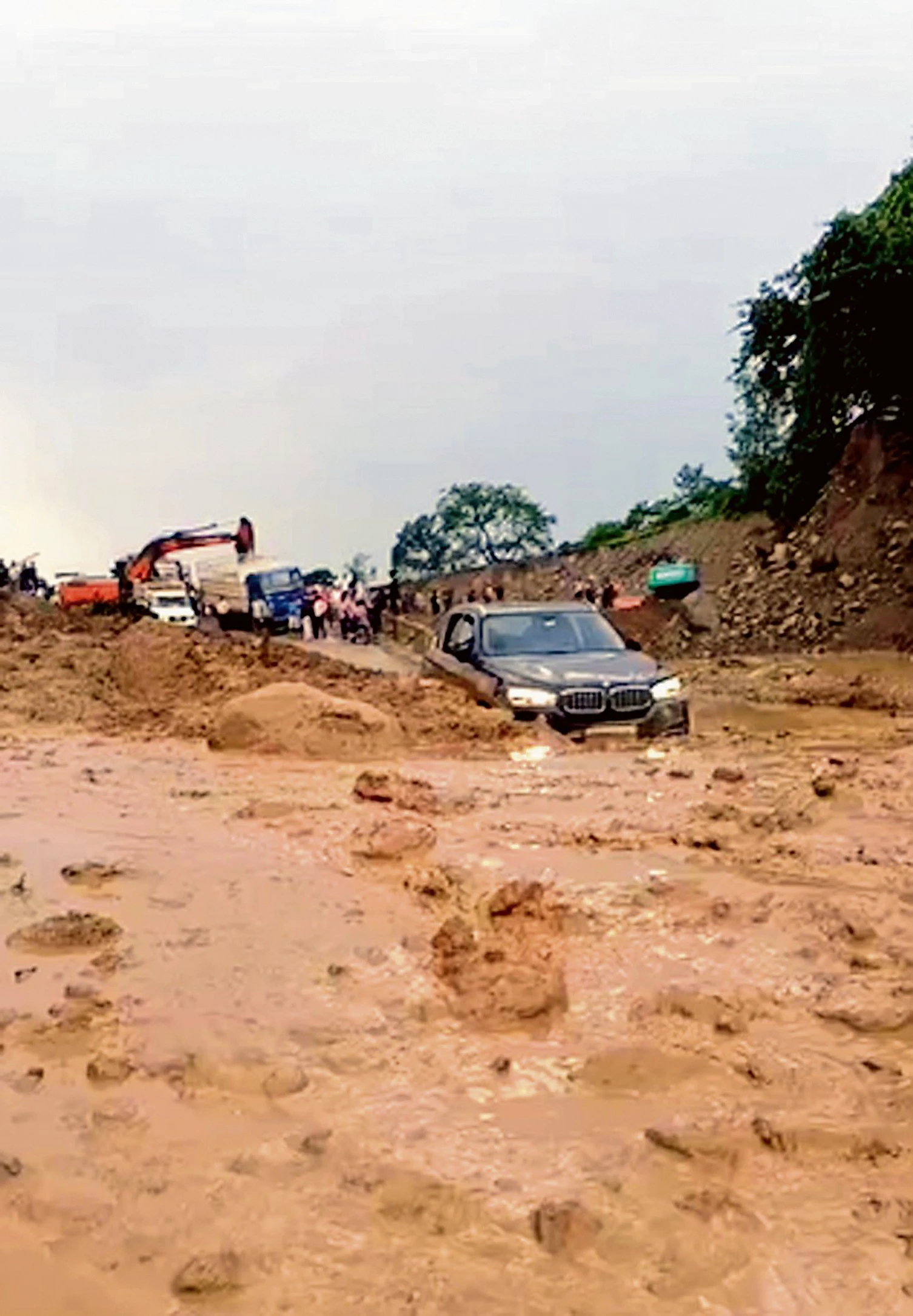The increasing inflow of tourists to the hill towns and pilgrimage sites in Kangra district has intensified demands for wider roads. But, the push for quicker, easier access to the hills is coming at the cost of human lives, damage to infrastructure, losses to local ecology and natural resources.
The widespread widening of roads through fragile mountain terrains is triggering slope instability, irreparable ecological damages besides causing landslides. The Pathankot-Mandi National Highway, which cuts through Kangra, is one such lifeline under strain. Its four-laning project has already made the route prone to frequent landslides, particularly in the ongoing
monsoon season.
Concentrated rainfall has loosened the soil along stretches near Kotla tunnel, Jasoor, Bhali, Shahpur, Thanouri and other vulnerable spots. The landslides and soil erosions have become routine, disrupting travel and threatening lives.
The toll is mounting. In the past few weeks alone, the district has witnessed multiple fatalities: seven in road accidents, four in landslides and two struck by shooting stones. Each incident underscores the peril of rushing development without safeguarding the fragile Himalayan ecosystem.
While Kangra district’s fragile geology is often blamed for its frequent landslides, the pattern tells a more complicated story. The simultaneous rise in road construction works and landslide incidents shows that these disasters are not purely natural events triggered by rainfall. The roads are essential for socio-economic development, but the landslides caused by reckless hillside cutting for their construction often undermine the very benefits these roads are meant to bring to the tourists and the
local residents.
In Jasoor, frustration runs high among the residents as a flyover project drags on for nearly four years. Monsoon rains has flooded low-lying areas beneath, sending water into homes and shops. Shahpur town also faces a similar situation, where the under-construction highway has turned into channels for gushing rainwater, sweeping into roadside buildings and leaving several families homeless.
At Kotla, near the tunnel, freshly cut, inherently fragile rock faces have collapsed onto the newly built highway. Even the safety nets meant to secure these slopes have been torn away by water at several points – a telling sign that poor planning can be as dangerous as the rocky terrain itself.
At Bhali, a newly constructed portion of the road has been washed away, leaving commuters to navigate dangerous stretches covered in slush and made treacherously slippery.
Similarly, at Thanouri near Nagrota Bagwan, paver blocks along the under-construction highway have been swept away, exposing the poor condition of recent road construction works.
If these warning signs of nature’s fury continue to be ignored, the cost will be far greater than any economic gain from unchecked development. What is needed is not just quick fixes after each disaster, but a long-term vision rooted in sustainability and scientific planning.
Balancing development with ecological preservation is no longer optional – it is the only way to ensure that our hills, rivers, forests, animals, birds and villages remain safe for future generations. The time to act is now, before the damage becomes irreversible.
